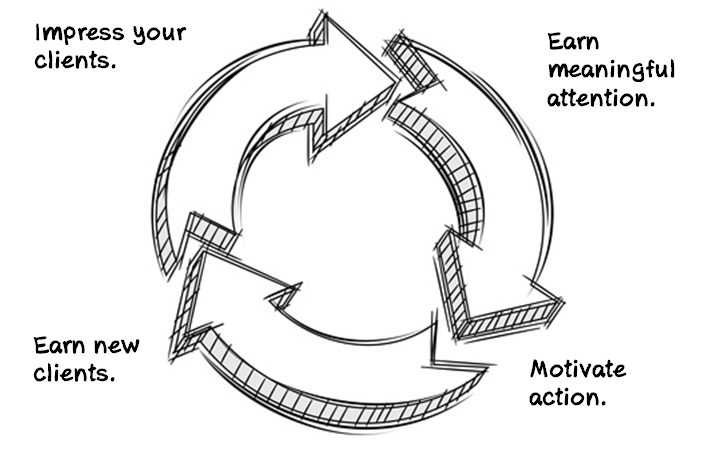This is one of the fundamental questions that we’ll work to answer at this site.
Who are the people you want to attract to your practice as clients? What is the process they use to find lawyers like you?
Until we understand the answers to these questions, anything you do to try to market to your audience is really nothing more than guessing. In fact, this is why so much legal marketing fails.
One of the greatest challenges in marketing a plaintiffs’ law practice is that your audience of potential clients can be very large with seemingly no pattern of demographic information. In other words, the public at large.
However, if you have been successful in regularly earning new clients, I bet that, upon examination, you would recognize some patterns.
At a very simplistic level, you would probably recommend patterns relating to location. If your practice relies heavily on local word of mouth referrals, it shouldn’t be surprising that many of your clients reside in a local area.
This is some of the very basic demographic information that is of particular value in marketing a law firm.
Likewise, if you were to look, you’d probably notice some patterns relating to your clients’ psychographics. For example, you will probably recognize interest and lifestyle patterns among your existing client base.
This information is also extremely powerful in understanding how to best communicate to your target audience and how they are most likely to search for, research and ultimately hire a lawyer.
The purpose of this post isn’t to answer all of these questions. It would be futile to try to answer them in a single post. Instead, my purpose is to get you thinking about your audience in this way and stress the importance of performing audience research before launching head-first into ill-advised marketing campaigns.
As you should know, a lawyer’s reputation and relationships are her most valuable assets. Anything that is done to develop new business should be executed with one’s reputation at the forefront. It takes a lot of work to develop a reputation for excellence and very little to harm it.
Much of the discussion here will involve technology. It should be obvious that technology has greatly impacted the way we communicate. This is particularly true in the areas of web technologies including search engines and social networks.
However, as we discuss these topics, I will always try to remind you that these are not a substitute for what’s really at the heart of client development: reputation and relationships.
Nonetheless, it’s silly to ignore the impact that the internet has had on the ways people communicate.
Too many lawyers seem to pit historical notions of client development against technology. They tend to paint with very broad brushstrokes often concluding that the web is largely comprised of people who aren’t likely to turn into clients.
Hopefully, as plaintiffs’ lawyer, you understand that most people who think they might need a lawyer won’t have a case worth pursuing. However, it’s foolish to conclude that everyone online fits this category.
Fortunately, the web provides a variety of ways to to target those who are more likely to have a claim worth pursuing and efficiently filtering out those who do not.
Unfortunately, too many lawyers don’t accept this basic premise and conclude that “the web in general” doesn’t work for client development.
But you really don’t need to be a web marketing expert to recognize how the world has changed. Even people who are referred to you by people that know and trust you are likely to look you up online. Therefore, even the most traditional forms of word of mouth have been forever changed by search engines and the internet.
Whether potential clients are able to easily find information about you online, that validates your reputation, can be the difference in whether they even bother to contact you.

If you end up regularly visiting this site, you’ll likely see me haul out the image above from time to time. I think it it’s extremely effective in illustrating a cycle of client development.
Many of your new clients will find you because other people referred them to you. This makes impressing people critically important and impressing your clients paramount.
If you regularly impress people, you will earn meaningful attention. It really is that simple. The hard part, of course, is regularly impressing people. Competent service is really just table stakes. Making sure that your clients perceive that you’re delivering them impressive service is very challenging for most lawyers.
Once you’re regularly impressing people and earning meaningful attention, you can focus your efforts on motivating them to take action. This is where much of the “marketing work” takes place. You see, it’s often not enough to merely “do great work.” You have to give people a reason why they ought to consider you. Why you are different from the countless other lawyers out there. What is it that you do better than everyone else? What makes you special?
This is the area that most lawyers focus on. It’s the reason for so much crappy law firm marketing too. One of the biggest problems is that lawyers tend to misunderstand what their potential clients really care about.
However, those lawyers who truly understand their audience, are able to deliver precisely what they’re potential clients need at the critical time that they’re considering consulting with them.
When this happens, those lawyers earn new clients. And the cycle repeats.
I hope you find this site useful. Please don’t hesitate to contact me with questions or ideas.
